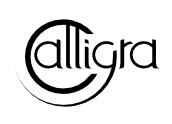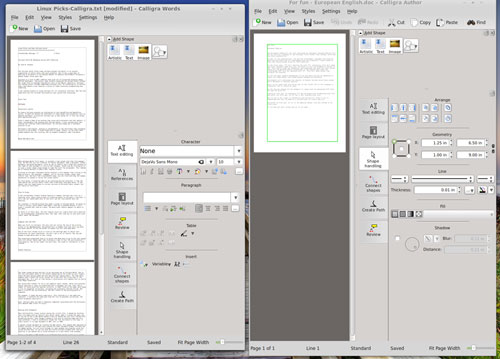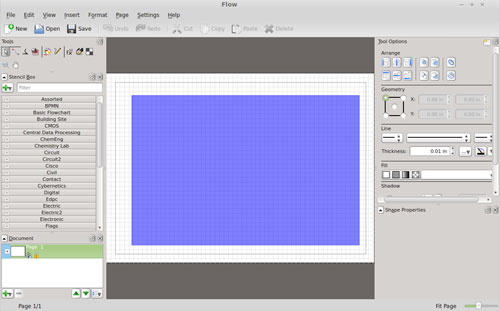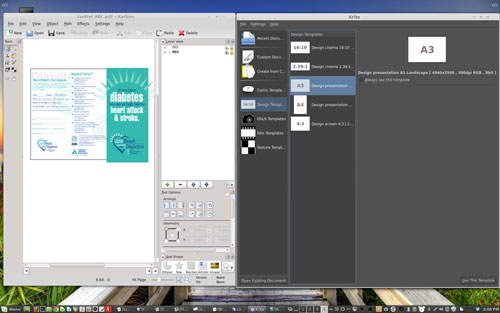
![]()
If you spend any amount of time creating documents, graphics or organizing data into reports or visual presentations, drop whatever collection of tools you use and put the Calligra Suite to the test.The Calligra Suite is a forked set of office tools for the KDE desktop that branched off the stalled KOffice suite. However, you do not have to run the KDE environment in your Linux distro to get this intriguing advanced office suite. It runs on any desktop flavor.
Calligra version 2.8 was released March 5. It contains nine integrated creativity modules that far exceed the reach of OpenOffice and LibreOffice. This collection of features even improves on those found in standalone apps.
When I reviewed the Calligra Suite about one year ago, I said it was an unusual compilation of office tools with much potential. I also noted that the suite of tools had a good deal of maturing to do before it could advance beyond its mediocre performance.
Calligra has grown up considerably in the interim. Some of its components still need more nurturing, but this latest release certainly has a lot to offer.
Work In Progress
Calligra 2.8 does not include updates for every module in the suite, but the improvements provided in what has been upgraded are impressive.
This is particularly true for the most often-used components. The word processor (Calligra Words), spreadsheet (Calligra Sheets) and the slide deck presenter (Calligra Stage) are prime-time terrific and far from clones of alternative office offerings.
Improvements added to other creativity modules in this collection make them very usable. The developers deserve credit for pushing out version 2.8 now while they continue to improve the secondary applications for the next release.
Module Mania
Think of the Calligra Suite as two tool kits in one package. The first set of applications contains the standard office offerings of word processor, spreadsheet, slide presentation and database creator.
The second tool kit within the Calligra Suite includes more specialized tools not often found in an office package, such as tools for creating charts and diagrams, a digital painting studio for artists, a separate e-book creating application, a vector graphics editor, and a mind-mapping program.
The nine modules install from one package download. Desktop dependencies are fetched as needed during the installation.
Each component is fully functional and independent of the other programs, but files created in one Calligra application can load into the others to embellish or continue the creation process. The integration of feature sets and user interface ties the nine separate programs into a common family.
Creative Craving
In what might well be a stroke of creative genius, Calligra provides what are essentially two word processing applications. Calligra Words is a traditional all-purpose writing program for academic, business and personal use. Calligra Author is a one-stop tool for creating novels and textbooks in e-book format. It has tools for planning, writing, reviewing and publishing.

Conceivably, you could use either writing module for both purposes. The most significant differences involve each program’s specialized tools. For example, you can easily import graphics and manipulate page design in Words. You can follow a creation process more suitable for an e-book end product in Author.
Calligra Stage is more functional than a typical presentation application. It comes with some stylish options for slide backgrounds. Built-in tools make creating slides using images, videos, animation and other special effects quick and simple. A plug-in component opens the door for more add-on options.
Calligra Sheets is a fully featured spreadsheet application. It has the expected standard spreadsheet features with formulas and options to display charts. It also has better support for pivot tables — a data-summarizing tool to help visualize the big picture abstracted from collected data. Calligra Sheets comes with options for General, Business and Home/Family templates, as well as a comprehensive array of pre-set formulas.
Creativity Continues
Calligra Flow is a tool to create and edit diagrams, organization and flow charts. Its tool set includes numerous stencils that let you start a project with more than a blank screen. For example, you can select designs from categories for Networking, Renewable Energy, Chemistry, Building Sites and other options. Use the sample design as a foundation to build upon or modify.

Calligra Kexi is a visual database creator. Use it for designing database applications, inserting and editing data, performing queries and processing data.This program is much more fine-tuned than previous releases. Developers spent time fixing what was there rather than adding new features this time around.
Krita is a full-featured sketching and painting studio. Its new features include a high-quality scaling mode for the OpenGL canvas, G’Mic integration, and a wraparound painting mode for easy creation of textures and tiles. Also added is support for touchscreens. The program supports concept art and creation of comics and textures for rendering.

Karbon, the suite’s vector graphics drawing and editing application, supports advanced layered images usable for illustrations. It has a customizable user interface with toolbars and dockers that you can place anywhere.
Braindump is a mind-mapping tool that simplifies the process of dumping and organizing the content of your brain. Its user interface makes it easy to jot down, copy/paste and connect ideas, drawings, images and text. Flexible white boards facilitate the mapping process.
Great GUI
Two design factors make the integration of these creativity applications easy and effective, but this approach is not intact in all nine components.
In most modules, the consistent look and feel of a unified set of tools is obvious. This is important. Calligra is more than a collection of separate programs.
Perhaps even more significant is the lateral design. Most office suites fill the computer screen vertically. That is a nice look on a mostly square, large screen.
However it blunts the visual appeal when you stare for too long at large but narrower screen real estate. The design in Calligra spreads out horizontally. This puts the tool rows and ribbon menus on the right side of the screen. Regardless of the shape of the screen, this is a much more effective layout.
Getting It
Calligra is available in versions for FreeBSD, MS Windows (preliminary support) and Mac OS X (preliminary support) from the links on the developer’s website. The suite is generally available in Linux distro repositories that favor the KDE desktop.
You will not find this latest version until the Linux distro communities play catch-up. You will not get all of these nine components or the latest improvements in even recent version releases from distro package systems yet.
To get version 2.8 you need to follow the link on the developer’s website to the KDE package database. You will find links to specific Linux distro communities. Those will lead to other links to specific distro packages or tarball files.
In most cases, if you are running a Debian-based Linux distro, it is far easier to get Calligra Suite using APT. For Debian installations, run these commands in a Terminal:
sudo add-apt-repository ppa:kubuntu-ppa/backportssudo apt-get updatesudo apt-get install calligra
Follow this link for another source of Calligra releases.
Bottom Line
Calligra Suite is a massive collection of office writing and editing applications with a database creator and a few other tools added to the mix. Several of the nine modules go well beyond the tool sets found in other office packages.
The big advantage to Calligra is that development has continued. Similar office suites for Linux have stalled or forked without much to distinguish one from another.
Calligra Suite is a solid offering that has grown considerably since branching out from its traditional KOffice roots. It has something for everyone. Its tools fills the needs of writers, artists, content designers and office workers.
Want to Suggest a Linux Application for Review?
Is there a Linux software application you’d like to suggest for review? Something you love or would like to get to know?
Please email your ideas to me, and I’ll consider them for a future Linux Picks and Pans column.






















































Everything seems just great but for me there’s still one deal-breaker.
I tried switching from Libreoffice Writer to Calligra Words. Sadly, anti-aliasing is just awful. Honestly, fonts look bad with anti-aliasing on and off, with hinting and without it. I found some article proposing turning the hinting off. I mean, really? It’s anti-aliasing along with great hinting that make fonts like Ubuntu, Times New Roman, or Dejavu display so nice (in the entire desktop environment; not including Calligra, of course).
Anyway, just set one of these fonts in a document, and compare how it’s displayed in Words and Writer. The difference is ridiculous. So for me, who works mainly with text, there’s really no contest. But then again, it’s this one thing that bugs me, so I’m willing to try again when this is fixed.